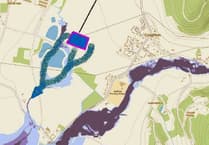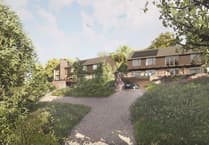AS a retired agricultural environmentalist, born and bred on a farm, the following points may be helpful to your correspondents, the most recent of which wrote Boar Not Alarmed in the September 4 edition of the Review.
Wild Boar, like all other members of the porcine family, all share certain characteristics:
• They will go through anything that they can see through. Thus in the yard, market etc, they are easily guided by means of a solid board (wood etc)
of approximately 50cms square. Held at her head level, this will stop even a charging or scared sow who will swerve rather than run into a solid obstacle.
• They will avoid even mild electric shocks but, like all animals with a tough hide, they will only react to these if administered to a wet or delicate part of their anatomy, namely just behind their ears or on a wet snout.
• They all love earthworms – a good supply of these is like a dish of caviar to most humans.
The first and third of these characteristics could be used to control their behaviour, providing that one is aware that they are quite intelligent and should not, therefore, be considered fools.
Considering the first point: if confronted by a solid fence that they cannot see through, they will not attempt to go through it, but will choose to go around.
However, if they find a fence as shown in the photograph in the paper or a gate that they can see through then this appears to them to be just like a line of saplings in the forest and they will attempt to barge their way through.
Solution: put up a solid fence with no gaps.
The question of why they do not stay away from the short green turf so liked by humans, is that they have learnt that it is a good place to look for earthworms.
Short grass is normally a good site for earthworms as it tends to be unsheltered from any rain or dew, and thus is likely to be a good place for algae to colonise the soil crumbs – algae are ‘the bread of life’ from the point of view of earthworms.
Humans have a tendency to exacerbate the problem by watering their lawns! Some even improve the environment for both algae and earthworms by sprinkling lawn fertilizer over the top, aerating their lawns with spikes, and removing the moss – moss tends to exclude air by encouraging retention of water beneath it and thus minimising the soil air so essential for both the algae and their diners.
So, if humans were to develop a liking for seasonal wild flowers or herbs in their lawns and mown roadside verges from the early spring violets, through dandelions (a nice light wine), mouse-eared hawkweed to daisies, clovers, self heal and the hawkbits then they would not need to water their lawns, never mind fertilise them.
The lawns would become much more colourful, with a range of insects and spiders. These are not harmful to humans and they also feed our birds, and allow the lawn to be more robust.
The overall result would be that the lawns were less attractive to the wild boar as they would have a diverse range of species and not merely be a rich banqueting area for the wild boar.
However, in this area, they have now come to understand that they only have to look for short grass devoid of herbs if they want to dine well.
– Alison Tottenham, Huntley.




Comments
This article has no comments yet. Be the first to leave a comment.